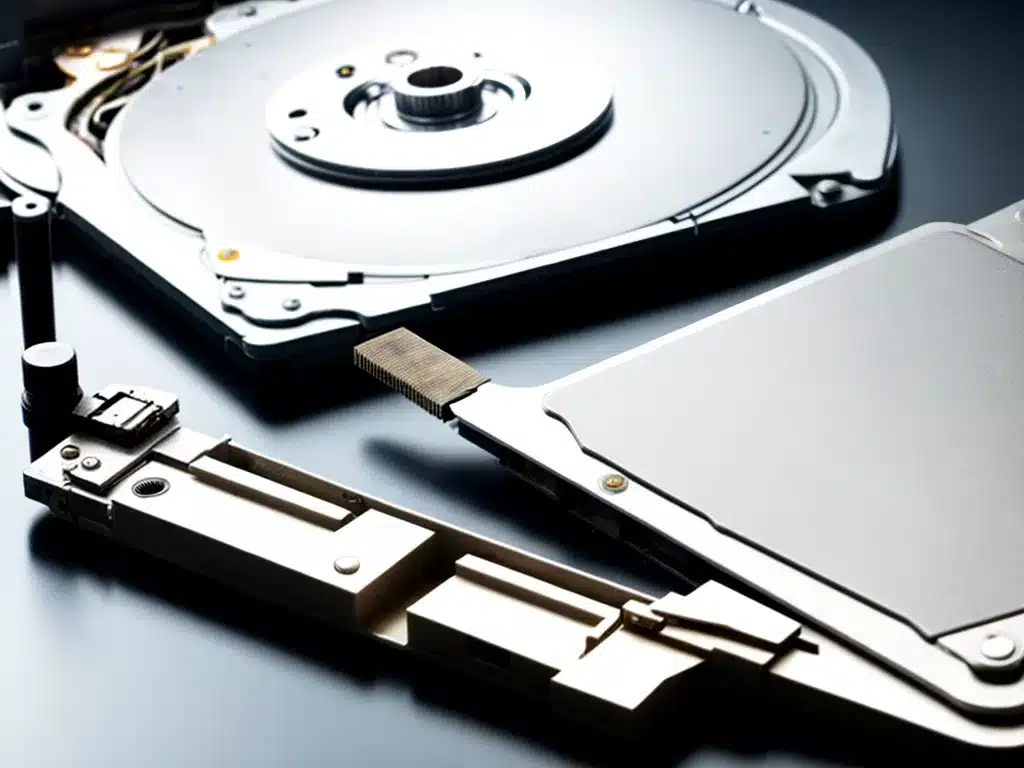
What is an SSD?
An SSD (solid-state drive) is a type of computer storage device that uses flash memory to store data, unlike traditional hard disk drives which use magnetic spinning platters. SSDs have no moving parts and are much faster than HDDs for reading and writing data. However, deleted files cannot be easily recovered from SSDs unlike HDDs.
Why is restoring erased documents difficult on an SSD?
SSDs use wear-leveling techniques that spread out writes across all the cells in the drive to improve lifespan. So when a file is deleted, its data is not actually erased from the SSD cells immediately. But soon, those cells will be overwritten with new data. This makes restoring erased documents very difficult compared to HDDs.
Some key reasons are:
-
TRIM command – This instructs the SSD to permanently erase data marked for deletion by the OS. So data may be gone before you try to restore it.
-
Garbage collection – SSD controller erases old deleted data permanently to free up space for new writes.
-
Wear-leveling – Data gets distributed across different cell blocks making it hard to locate.
When can erased documents be recovered from an SSD?
In some cases, erased documents can be recovered from an SSD:
-
The deleted file was not overwritten yet with new data. As long as the original data bits are intact, the file can be restored.
-
The SSD is newer and less used. There is a higher chance deleted files are still present and not overwritten on a lightly used SSD.
-
The deleted file was large in size. Larger files have data scattered over more SSD cells, so more chance some bits are not overwritten yet.
-
Power was cut to SSD immediately after deletes. This prevents TRIM, wear leveling and garbage collection from running.
-
The deleted file was on an encrypted volume. Encryption protects data from being permanently erased.
Best practices for recovering erased documents from an SSD
Follow these best practices to restore erased files from an SSD:
-
Stop using the SSD immediately after file deletion to prevent overwriting.
-
Unmount the SSD if possible, to prevent the OS from overwriting data.
-
Don’t install any recovery software on the same SSD as it may overwrite deleted data. Use another media.
-
Use a write blocker device or boot into a recovery OS that loads completely into RAM without mounting the SSD.
-
Run a forensic data recovery tool like Ontrack EasyRecovery that can scan SSD cells directly.
-
For encrypted volumes, use a forensic tool that can decrypt and recover data.
-
If above fails, look into professional data recovery services for SSDs – but it is expensive.
Tips to avoid needing erased file recovery on an SSD
Follow these tips to avoid needing recovery of erased files from SSDs:
-
Enable file history or system backups to external media on a regular basis. This provides copies of deleted files.
-
Copy important documents periodically to another drive or cloud storage.
-
Before deleting files, first move them to a recycle bin or a different folder on the SSD, in case you need to restore them.
-
Use versioning features in apps like Office 365 or Google Docs so you can revert to an older version if a file is deleted accidentally.
-
Install a secure delete tool if you want to completely destroy files with no chance of recovery.
Conclusion
While recovering erased documents from SSDs is difficult compared to traditional hard drives, it may still be possible if the original data bits have not been overwritten. Following best practices like regular backups, using copy-to-trash features and avoiding further usage of the SSD after deletion can help. In some cases, advanced forensic data recovery tools may still be able to restore deleted files from SSDs.












